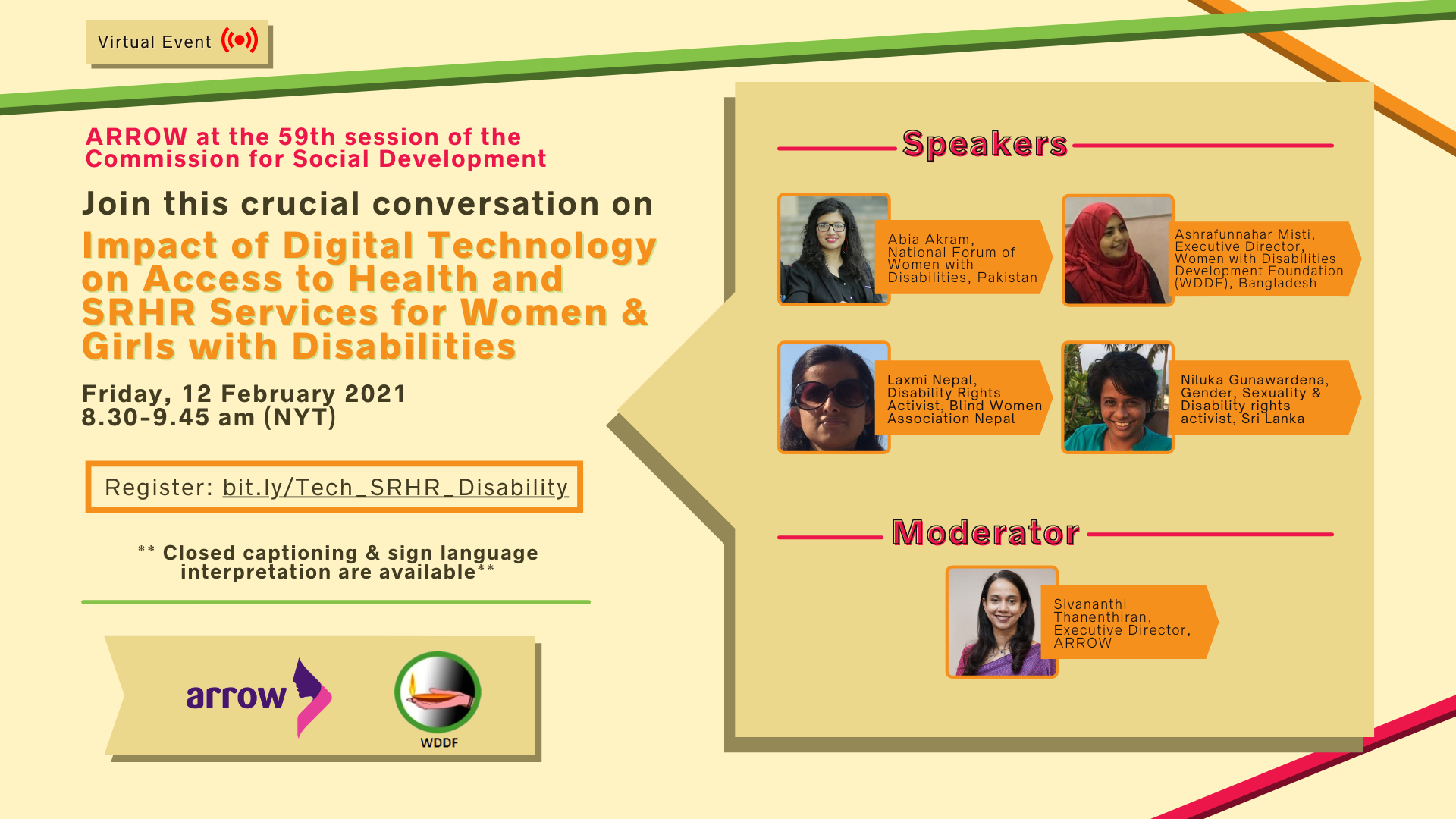
This was a very timely topic as the COVID 19 pandemic and the parallel shadow pandemic of rising sexual and gender-based violence against women and girls have made it imperative that information provided on essential services including SRH services are transparent, accessible and affordable through delivery of services using virtual reality tools, wearable medical devices, telehealth, and 5G mobile technology. The session featured four disability rights advocates working on the issues of human rights of women and girls with disabilities in their own respective countries namely Bangladesh, Nepal, Pakistan and Sri Lanka. The speakers discussed examples from the South Asian region where digital technologies are transforming the landscape of the healthcare industry. They shared experience on how digitalization of health services has benefited women and girls with disabilities and discussed the existing challenges and barriers in accessing healthcare services including SRHR as digitisation can risk the e-exclusion of persons with disabilities with little or no access to technology. Some key recommendations discussed include digital transformation and advancement for better sustainability and to improve accessibility to health which requires investment.
Below are the recommendations:
- Digital transformation and advancement are an important development to improve accessibility to essential health services including SRH services for persons with disabilities, women and girls with disabilities in particular.
- Digital delivery of health services including SRH services as a means of sustainable form of development is necessary as it will convey information and services in a way that is inclusive (provided in local languages), affordable, free from stigma and discrimination and accessible to all.
- Putting women with disabilities in decision-making and implementation roles to enable inclusivity and to allow for their voices to be heard. There must be a formation of a roster of experts where there is representation from women with disabilities.
- Enabling resource allocation to allow for infrastructural and policy developments including disability inclusive national SRHR policy that advance rights of persons with disabilities.
- Closing the digital divide by increasing the digital literacy of persons with disabilities, particularly, women and girls with disabilities and encourage local innovators to develop user and budget friendly smartphones, apps and other telecommunication devices.
- Ensuring digital health applications, website, platform and services are developed using universal design as the guiding principle to ensure accessibility. For existing applications, the accessibility features must be increased using the same guiding principle.
- Engaging health service providers and actors from the community level. In rural settings pharmacists and community health care workers can be engaged as facilitators if they are equipped with technological skills and digital health related materials to enhance access of SRH services among the women and girls with disabilities.
- Gathering more evidence and data on SRHR, disability and non-communicable disease to understand the experiences of women and girls with disabilities
Panelists also recommended greater availability of youth friendly health services, awareness among community members on disability rights and SRHR through comprehensive sexuality education.
Photo from the event:

 Welcome to the United Nations
Welcome to the United Nations